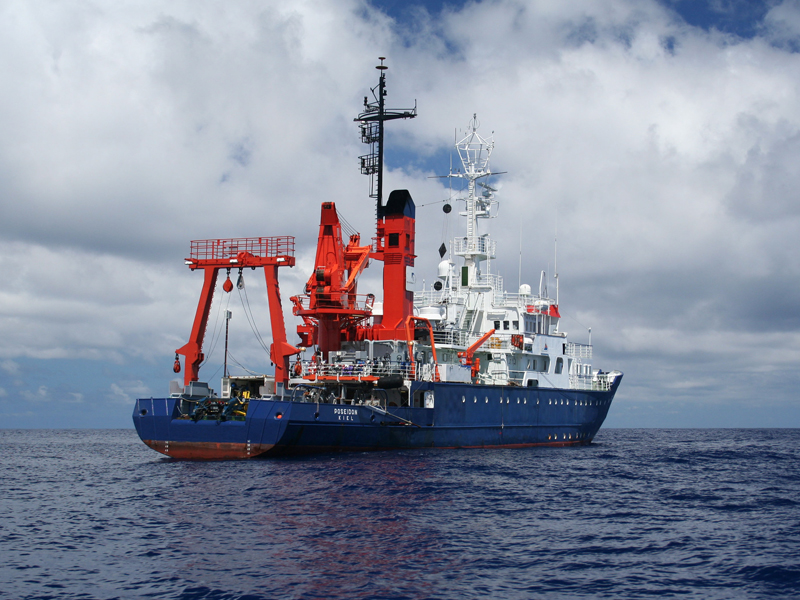POSEIDON POS483
- Area:
- Tyrrhenian Sea
- Time:
-
28.03.2015 - 15.04.2015
- Institution:
- GEOMAR
- Chief scientist:
- Marion Jegen-Kulcsar
Along with manganese nodules and cobalt crusts so-called massive sulfides (SMS) belong to those marine mineral resources, which are in the focus of research for several decades. They occur at relatively short-lived hydrothermal vents near plate boundaries or at volcanically active zones. There hot water enriched with minerals exits the ocean floor. Once exposed to the cold bottom water of the ocean, the minerals precipitate and accumulate on the ground or form meter-high chimneys ("black smokers"). The search for such massive sulfide deposits currently relies mainly on the physical and chemical traces left in the seawater by the hot vents ("water column anomalies") and the mapping of the seabed morphology with subsequent sampling. In this manner only active hydrothermal vents or deposits close to the surface of the ocean floor can be detected. Old massive sulfides at inactive hydrothermal vents, which are commonly covered by thick layers of sediment, or massive sulfide deposits which form underneath a sediment cover can not be found.
During the expedition POS483 existing and new electromagnetic instrumentation is tested, which detects and characterizes SMS deposits also at depth based on their associated electrical conductivity anomaly. This technology will allow to detect sedimented deposits and SMS deposits that have completed their formation cycle and are believed to be much larger. The system is tested on partially sedimented SMS deposits on the Palinuro volcanic complex situated in the Tyrrhenian Sea. This region has been mapped in detail, SMS deposits have been drilled and the drill cores are available at GEOMAR. Therefore, the electrical conductivity of particular geological units may be determined. With the geological background information the electromagnetic measurements can than be calibrated. The development of the technology that we want to test is funded through the funded EU-FP7-proposal ‘Blue Mining’. The expedition is conducted in close cooperation with the Colorado School of Mines.



